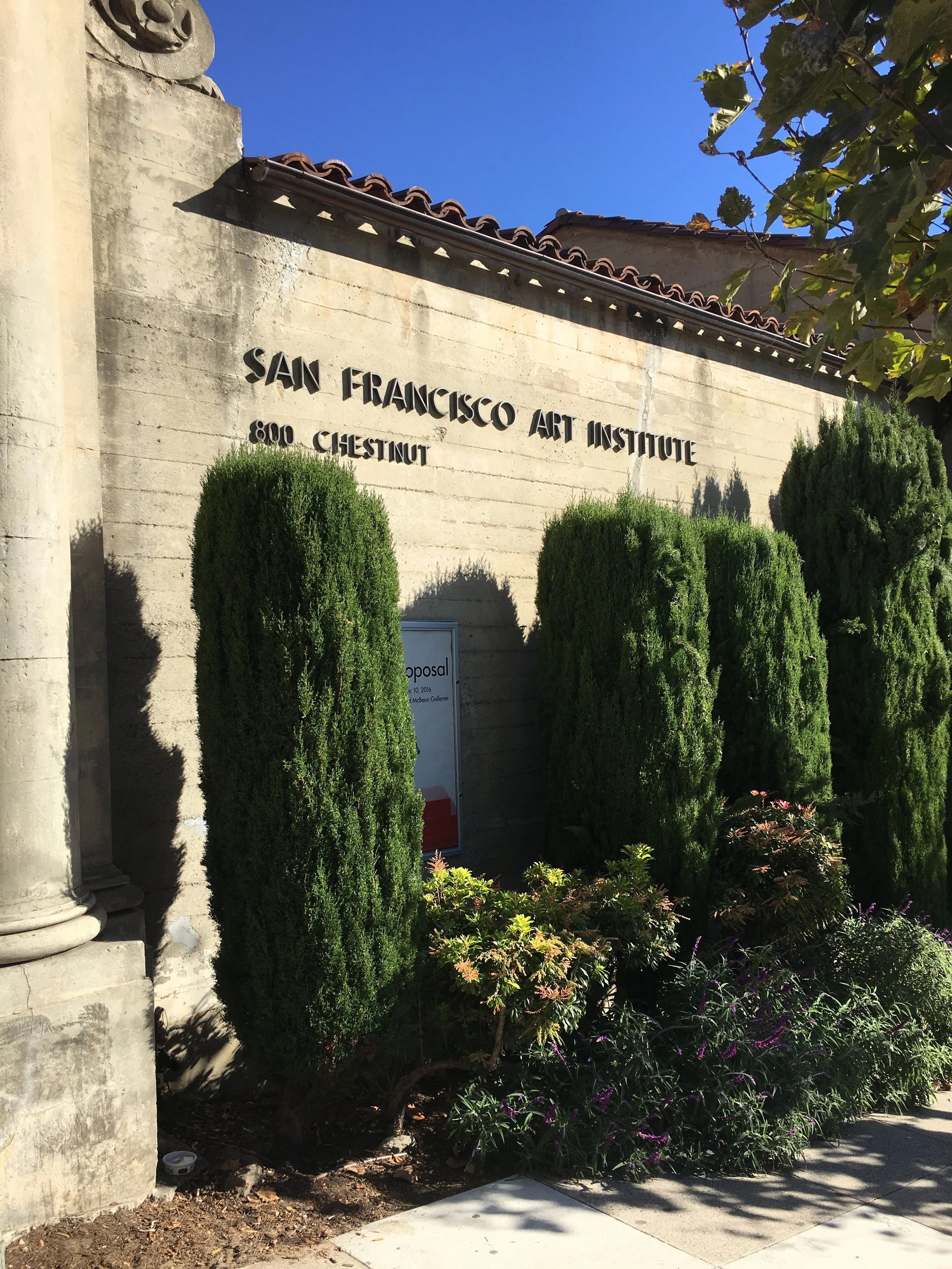
The Study of Art, Theory, and Practice
Ah, the study of art. Is anything more inspiring, and as difficult, but absolutely transcending in all aspects of the human experience? Perhaps life itself, which in many movements became that art, but for the purposes of general art practice and theory, I hope this serves as a document. (all images are of the San Francisco Art Institute, Anatomy study from notes and assignments from Scott Eaton’s cources)
This is not for everyone, but for the serious art student who finds themselves unable to attend a formal school or is in a community with few resources. I hope this helps. I put this together because the Art School I attended closed, which devastated our community in the Bay Area and was very expensive. The entire library of SFAI's storied volumes can be referenced here: just type "SFAI Library" without a password to see part of what fueled the Bay Area community and wider for over 100 years and is preserved today.
The study of art in a modern context really began with the French Academy, which was, in many ways, a codification of the apprenticeship system that existed prior to the modern period. I believe the modern period actually started with this method, the beginning of a full democratisation of art, and the invention of serious study that could be repeated, however constricting, into a definitive practice. There are many places that enter into this category in our contemporary world, and this resulted in what is now called the Atelier movement.
There are teachers who have founded schools of this nature online and in person. You definitely could find one in your area, but if not, we recommend Sadie Valleri’s Atelier, which emphasises the direct curriculum of the Academy, which was started in San Francisco some years ago and is now online in what was, for me, a turning point of really understanding realist drawing. The one thing missing from these studies is the serious study of anatomical studies, which are vital if you are making figurative art or have an interest in digital sculpture, which is one of the reasons the Academy was formed originally at all. Scott Eaton’s classes have long been a source of study for this, and his online classes are phenomenal and have a deep history within the field. There are various levels of instruction, with affordable options for each class.
But if you’re into more contemporary art forms, which are ever-evolving, there are also low-cost resources available to you. Kimberly Brooks has a resource specifically for oil painting and portfolio building that is entirely online. This goes over the technical aspects of oil painting and has a class on portfolio building. Which could be seen as a kind of micro MFA for advanced research; academic journals can be found online, and Grove Art has a specialised resource for articles that Wikipedia might miss. For a general art Western Art Introduction, Sister Wendy’s series, and here is almost 12 hours of it, is an inspiring guide.
And for those who want to know some of the theory by which contemporary art schools enacted their lesson plans, a book that was reccomended to me by an instructor to understand the theoretical framework of the drawing program at SFAI is The Art of Responsive Drawing, which is both a standalone course and a document of the teaching practice of what is more generally known as contemporary art. And a deeper more philosophical guideline is Drawing Distinctions: The varieties of graphic expression. Both of these books can give insight into what it was like to be in the drawing and painting studios of SFAI.
There are also classes in most large cities at art centres with various levels of study; usually, they tend more toward generalisation, but most of them have advanced classes as well that are very low cost. In East Bay, we have the Richmond Art Center and the Berkeley Art Center, which is on the University of California at Berkeley’s campus and tends toward advanced study if you decide to go this route. In my experience, many of the teachers at the more expensive art schools also offer classes at times at Community College. When I attended, teachers at the School of the Art Institute of Chicago also taught at Harold Washington, and while I was at California College of the Arts, My drawing teacher from The Berkeley Art Centre was teaching Illustration Classes at both schools.
If you find you are not getting the tools and materials you need to paint or sculpt, Blick.com is amazing. They also have physical stores in many cities. In the East Bay, we also have FLAX Art & Design. These resources have everything imaginable and often have sales that make art very easy to afford. I’m emphasising affordability in all of this because growing up, I had no idea of these resources, and no one in my community had any knowledge of art practice at all.
I have read dozens of art practice books, and I found many of them lost or not well written without a guide. The art centres can provide this, but for an introduction to art theory of any practice, which can be both introductory and deeply academic, Art In Theory: An Anthology Of Changing Ideas, is an ecxcellent resource which has three volumes with direct texts from all art theory, from the Rennaisance to the formulation of Post Modernism. There is a limit to this series, however, and that can lead you into more advanced art theory, which is a careful study of general philosophy and mathematics, all of which can be found at Community College. In the East Bay we have Peraltas’ District of Colleges: remember, art is a lifelong study but it will open you up to the thoughts that will absolutely change the way you perceive life itself.
With all of these resources, Virtually anyone can get into the serious study of art. All art schools have both successful and unsuccessful formats, and art is so vast, but this can get anyone started. Our communities could be completely transformed by having advanced artists create work. The French Academy was instituted by the government at that time to fill a direct need for the painting of cathedrals. In this respect, Graffiti Art (see Style Wars for the beginning of this deep period) has fulfilled that role. But since that’s not available everywhere, requires advanced equipment to be safe, and in some communities, there is a misunderstanding of it, leading to classification that is regulative and often has punitive costs, this may be a way to keep the art forms on surfaces that can be moved and work within the threshold of community acceptance. Plus, you can take them anywhere.
As one more note we missed in this document, to become engaged in sculpture is another very difficult practice to get involved in with few resources. However, in the East Bay we have the Crucible. While it tends more for metalwork, I took a class on moldmaking one winter that is vital to many sculptural forms.
For advanced materials within this field we have Douglas and Sturgess and more. This is likely the most difficult avenue for study, and as an example I have drifted more toward digital sculpture due to the impossibility of the physical space requirements of the form.
Finally, what are you going to do with your work? Practice, practice, practice, practice, practice, practice, fail often, and work small at first. Use cardboard if you need to; slowly work up and don’t give up. These resources are all we have right now. When you’re ready, apply to shows. You can find so many places in your community, ask everyone, and find restaurants, shops, and anywhere that will support your work. You can reach the entire world through Call for Entry’s directory and ArtConnect And finally, good luck; it’s not easy, but with total dedication, anyone can get there.
It’s a lifelong study. Never give up.


